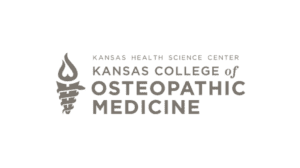Through effective B2B marketing strategies, you can let companies know about how your products and services can support their business success. The process allows you to create a reciprocal relationship that helps promote the mutual growth of your operations.
Unlike business to consumer (B2C) marketing, business to business (B2B) strategies demand a straightforward approach that focuses on the bottom line. Your products and services must serve as winning solutions to each company’s pain points or they’ll go with something that offers a better return on investment.
To make your B2B marketing campaigns stand out, you must have the right strategy in place from the start. Wondering how to get that done? Here’s seven effective B2B marketing strategies and tips to help you get started.
#1 Know What You Want to Achieve and Track
In order to create effective B2B marketing campaigns, you need to know what you want to achieve. Think long and hard about where your business needs the most help by answering these questions:
- Which products or services do you want to focus on most?
- Are you working on any new offerings that’ll roll out soon?
- Do you want to market to a particular niche or expand your focus?
- Which companies would you like to see buying your products and services?
- Would you like to increase website traffic, phone calls, sales, or something else?
As you answer each question, you can zero in on your target audience and figure out what kinds of campaigns will work best.
The answers will also help you identify which key performance indicators to focus on as you run your B2B marketing campaigns. If you want to increase website traffic, then you’ll need to track new and repeat visitors to each page. If phone calls and sales are your focus, however, then home in on conversion rates instead.
#2 Build a Strong B2B Brand Identity
To attract the right clients, you need a strong B2B brand identity that lets people know what your company is all about. You’ll need to dream up a great logo and tagline, pick a suitable color scheme, and create your company voice. Then, create a relatable brand story that highlights your mission and goals.
With that done, you can write up a style guide that’ll help guide your website and social media content. Have all your employees and contractors read and follow that guide, so you can keep your brand consistent across all channels.
#3 Create Tons of Quality Content
As you build your online brand presence, your website and social media channels should clearly communicate the purpose and value of your products and services. That’s only possible if you infuse those resources with tons of quality content that aligns with your style guide.
To cast a wide net, create many different types of content, such as:
- Blogs
- eBooks
- Case studies
- Whitepapers
- Infographics
- Videos
Also, consider creating a resource page on your website that answers all the leading industry questions. This will help your B2B clients find your company as they search for solutions to their major pain points.
#4 Use Both Organic and Paid Search
Effective B2B marketing strategies use both organic and paid search to reach the target audience. For organic search success, you’ll want to create a keyword map that identifies all the words and phrases used to find your products and services. Then, you just infuse those keywords into the website content that aligns with their search intent.
After that, you can use paid search to drive even more traffic to your site by placing ads at the top of the search results for all your major keywords. You can also run social media ads using those same keywords. This approach keeps your company appearing in front of business owners as they look for the products and services they need.
#5 Engage in Plenty of Email Marketing
Through email marketing, you can engage with business owners directly through personalized content. You just have to build an email list and put each company into segments that reflect their needs. After that, it’s just a matter of sending out custom content that helps direct them to your products and services.
You do need to follow a consistent schedule to avoid missing opportunities to engage with your audience. If you’re running a monthly newsletter, for example, then make sure to publish your works on the same date each month.
#6 Hop on Social Media to Promote Your Brand
Thanks to the widespread popularity of social media, you can easily engage with business owners on all your favorite platforms. Like B2C audiences, B2B buyers are scrolling through the newsfeeds all throughout the day.
So, don’t miss the chance to promote your blog posts, eBooks, and other works on the appropriate social media channels. Fun photos and videos work best on Instagram, for example, while eBooks and case studies are best placed on LinkedIn.
#7 Embrace the Power of Remarketing
Across all industries, business owners are endlessly busy and constantly juggling multiple obligations at one time. As a result, it’s exceedingly common for them to abandon their search for solutions before completing their purchase.
Thankfully, you can recapture their attention through remarketing. This innovative approach lets you put your ads back in front of them once they return to social media in their downtime. Then, your ads will jumpstart their memory and inspire them to explore your products and services as their ideal solutions.
Ready to implement these effective B2B marketing strategies?
If you’re ready to put these B2B marketing tips to work for you, contact our team today. Our B2B marketing agency can help you craft a personalized strategy for your company, so you can win contracts and complete more sales than ever before. We’ll also help you monitor the success of your campaigns and adjust the approach as needed to promote the growth of your business.

























